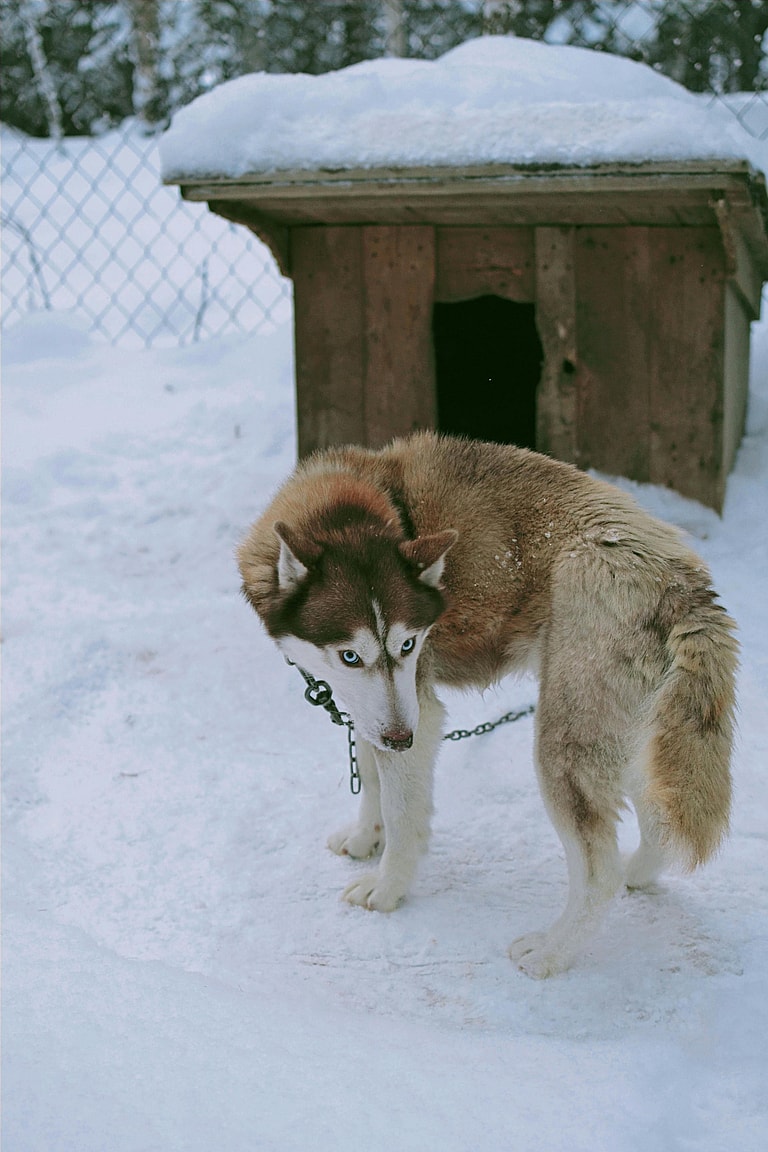Chained Outside for Years, Maverick the Husky Is Finally Free – Now He Just Needs a Home
A Siberian Husky named Maverick has been rescued from a life of hardship after being chained outside his owner’s home in Virginia. For much of his young life, Maverick endured isolation, confined to a chain with little shelter or affection.

Chained Dog Rescued By Shelter
Maverick’s story took a hopeful turn when concerned neighbors and family members persuaded the owner to surrender him to Pendleton Animal Welfare Shelter (PAWS). After initially resisting, the owner ultimately decided that keeping the dog chained was no longer acceptable.

At just 48 pounds, Maverick is underweight for his breed, though a healthy gain of 10 pounds would still keep him on the lean side. Despite his difficult past, the 1-year-old husky remains incredibly friendly, showing a resilience of spirit. Now free from his chains, Maverick is waiting for his next chapter: finding a forever home where he can experience the love and care he deserves.
Maverick Needs A Loving Home
The shelter is accepting adoption as well as fostering applications for Maverick. The beautiful furry dog is perfect for any home since he is not only good with kids, but is also dog-friendly as well as cat-friendly.
If you have a lot of love to give and a fenced-in yard, Maverick will be perfect for you. Apply for his adoption today or foster him until he finds his forever family.

Dog Tethering or Chaining – Is It Wrong?
The National Humane Education Society describes dog chaining as “a practice in which dog owners tether their dogs outdoors to a stationary object for extended periods of time. In some cases, chained dogs may be tethered for days, months, or even years.”
Often times people use chains or tethers for dogs to keep them in one place, so they do not cause any trouble. However, according to Dogster, “Chaining or tethering a dog is physically harmful and detrimental to their well-being.”
Chaining a dog outside poses a plethora of risks, which is why many vets are against the notion. In addition, the practice is illegal in many parts of the United States (U.S.).
What States Is It Illegal To Chain A Dog?
It is illegal to chain your dog outside in 23 states. If you’re wondering, is it illegal to chain a dog in Texas, then the answer would be yes. According to the Safe Outdoor Dogs Act passed in 2022, it is against the law to use chains or weights to tether dogs alone outside in Texas.
For more information on the various dog tethering laws in the different states in the U.S., you can check out this table published by Michigan State University College of Law.
Dangers of Chaining Dogs
Dr. Paola Cuevas, a veterinarian, believes there are many reasons that putting your dog on a chain is not recommended. The major ones include:
- A chained dog can suffer from psychological distress.
- To chain a dog can mean making them aggressive.
- Tethers can get caught up leading to dog strangulation and even death.
- Tethered dogs may not be able to reach their food or water bowls, resulting in starvation or dehydration.
- It can aggravate the dog’s behavioral issues.
- Constant rubbing or constriction from a collar or tether can cause friction burns or skin injuries on a dog’s neck.
- Tethered dogs without shelter are exposed to extreme weather, risking heat stroke, sunburn, hypothermia, and potentially fatal conditions.
- Chained or tethered dogs are vulnerable to fleas and ticks, with severe infestations potentially leading to anemia or death, especially in young or weak dogs.
- When tethered for a long time, the dog’s exercise needs aren’t met which can lead to muscular, cardiovascular, and neurological issues.
How You Can Help Chained Dogs?
As per PETA, you can take the following actions when you find a chained dog outside:
1. Collecting Information
You can gather basic information and record it, for instance, the location, and the dog’s description such as the the breed, age, size, and gender.
2. Check If the Dog Has Food And Water Access
You can check whether there are accessible food and water bowls near the dog.
3. Have a Conversation With The Owner
Politely knock on the door, express concern about the extreme weather, and suggest the owner bring the suffering dog inside, even to a laundry room or bathroom, for protection.
4. Contact the Authorities
If the owner refuses to help, leave politely and contact animal control or local authorities, stating the dog lacks water or shelter, which is legally required.





